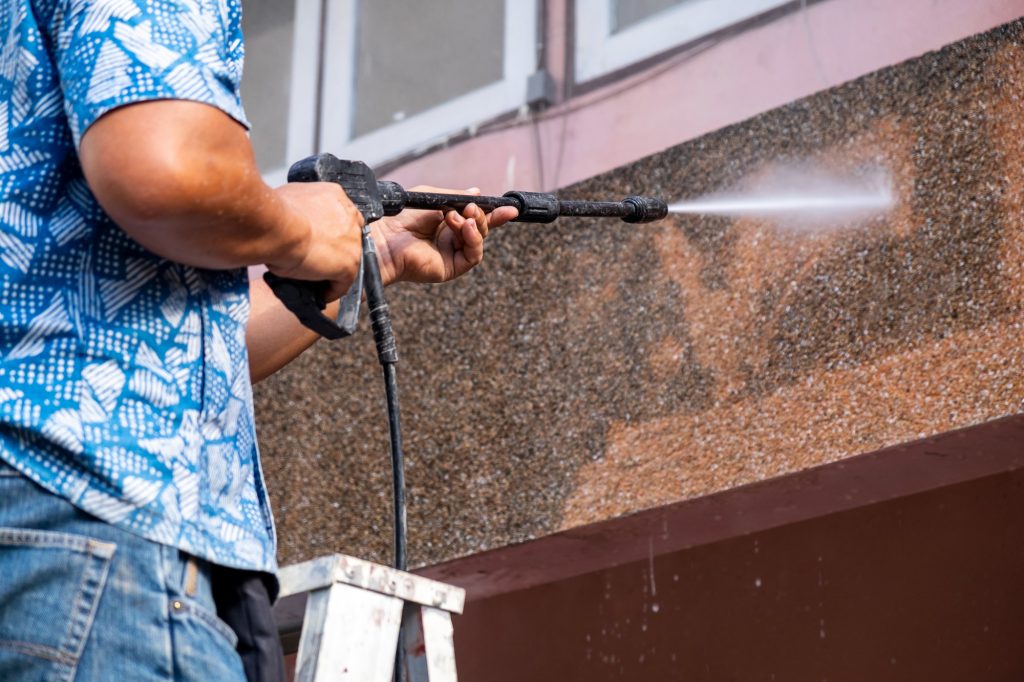As years pile up, grime bombards your structure taking away the warm and welcoming sparkle. Overhauling to give it a facelift may come from two ends, rebuilding or washing and following up with painting. But the thought of rebuilding takes you through the circus of amassing out-of-reach resources.
Painting is your greatest bet because it is a relatively cheap process involving the right tools to get the job done. And if you own a power washer, the odds work for you. You can cut the procedural costs significantly and spare a few bucks to set aside for other pressing needs.
Power washing comes as the best alternative when your structure presents a nasty picture with ugly paintings and redundant decorations. Your power washer does wonders with warm water and the suitable detergent to sizzle the steak. It loosens the paint quickly, way better than cold water. And the pressure seals the deal by lifting the stains off the concrete.
But it doesn’t come easy as it sounds. You’ve got some leg walk to cover before building up a skill set to give you an edge.
Use pressure washer detergents and steer clear from bleaching agents
Some stains respond to hot water and pressure only. You only need to soak the spot and leave it for 30 minutes before blasting out the paint with the proper nozzle. Some cases require you to approach with diligence to remove the stains without scaring the surface. Formulate your solution carefully and, using the detergent injector, start cleaning gradually until the grease detaches from the object.
The emphasis on the correct pressure washer solutions aims at minimizing the damage on the pump and the surface. Often, bleaching agents lack a standard procedure towards the right concentration. And too much of it can corrode the pump, rendering valves faulty.
Use the pressure washer to clean compatible materials
Pressure washing is a dangerous undertaking that reaps light objects apart. Experts advise against using a pressure washer on cars, windows, decks, and any other seemingly fragile thing. The argument is that expertise goes a long way when handling washers to avert damage to objects and injuries to the user.
And even if some compact spaces are resilient enough to stand the pressure, bringing the wand closer to them sends them crushing. An incompetent deck, for instance, can disintegrate when you choose to go with the zero-degree nozzles. Similarly, the streaming jets of concentrated water wash away paint from a wall.
It sends a strong message that you should be cautious when cleaning windows, siding, the roof, and decks. You can prevent damage by using low-pressure nozzles and holding the wand away to weaken the landing force.
Agitate molds and mildew with pressure washer detergents before washing
You may have had a hard time removing the green slippery layer around your decks. Such situations cause you to doubt your equipment and consider hiring a professional. A lack of one ingredient can’t deprive you of the joy of doing it yourself successfully.
Before the actual washing begins, be sure to treat the molds with cleaning detergent or bleaching. Detergents are powerful enough to absorb fluids from the molds, killing them instantly. Let the detergent sit long enough to kill the plants completely. Finish the procedure by blasting out using the zero-degree nozzles. As simple as that, you’ll have your deck beaming with sparkle once again.
Final thoughts
Cleaning your structure doesn’t have to be a daunting task. Employ your power washer when dealing with grease and other difficult-to-remove stains. It works like a charm to remove stubborn stains. When your cleaning prowess doesn’t seem to work, it is time to revisit your procedure. You could be in a rash to satisfy your gratification skipping vital steps in the process. A simple twist in pre-treatment shape could have been all you needed to get a fulfilling shine.
